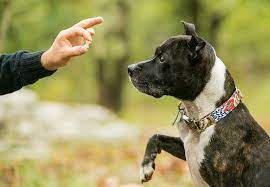Welcome to our comprehensive guide on dog training, where we’ll take you through each step of the journey towards mastering the basics. Whether you’ve just welcomed a furry friend into your home or have been struggling with obedience issues for a while, this blog post is here to equip you with all the tools and knowledge needed to become a top-notch dog trainer. From teaching simple commands to tackling behavior challenges, join us as we uncover the secrets of effective training techniques that will have tails wagging and paws obeying in no time!
Introduction: The Importance of Proper Dog Training
Dogs are known to be man’s best friend, and for good reason. They provide companionship, loyalty, and unconditional love. But as much as we adore our furry friends, it is important to remember that they are still animals with instincts and behaviors that need to be managed and trained.
Proper dog training is essential for a harmonious relationship between you and your canine companion. It not only teaches them basic obedience commands but also helps in preventing unwanted behaviors such as excessive barking, chewing, jumping, or aggression towards other animals or humans.
In this section of the guide, we will delve into the importance of proper dog training and how it can benefit both you and your four-legged friend.
- Establishes communication:
Effective communication is the key to any successful relationship, including the one with your dog. By training your dog using positive reinforcement techniques like praise, treats, or toys, you establish a clear line of communication between you two. This makes it easier for them to understand what behavior is expected of them.
- Strengthens bond:
Training sessions provide an excellent opportunity for bonding with your dog. Spending time teaching them new skills strengthens the bond between you two while also building trust and respect.
- Builds confidence:
Just like humans, dogs feel more confident when they have mastered a skill or task. Through consistent training sessions where they are rewarded for their good behavior, dogs learn to trust their abilities which boosts their self-confidence.
Understanding Your Dog’s Behavior: The Key to Successful Training
Understanding your dog’s behavior is crucial to successful training. Every dog has their own unique personality and behavior traits, and as a responsible pet owner, it is important to understand these behaviors in order to effectively train your furry friend.
First and foremost, it is important to remember that dogs are animals with natural instincts and behaviors. They have been domesticated for thousands of years, but their instincts still play a big role in their behavior. This means that they may exhibit certain behaviors that we may not understand or find frustrating. However, by understanding the root of these behaviors, we can better address them through training.
One key aspect of understanding your dog’s behavior is recognizing that they are social animals. Dogs are pack animals by nature and crave social interactions with both humans and other dogs. This explains why some dogs may become anxious or destructive when left alone for long periods of time. It is important to provide them with enough social interaction and stimulation to keep them happy and well-adjusted.
Basic Commands and Techniques: Sit, Stay, Come, and More
When it comes to dog training, mastering the basic commands is essential for building a strong foundation for your pet’s obedience and behavior. These basic commands not only help establish you as the leader of the pack, but they also allow you to communicate effectively with your furry companion.
In this section, we will cover some of the most important basic commands that every dog should learn – sit, stay, come, and more. We will not only explain how to teach these commands step-by-step but also provide tips on how to reinforce them consistently.
Sit:
The “sit” command is a fundamental skill that all dogs should learn. It teaches them self-control and helps prevent jumping on people or furniture. To start teaching your dog this command:
- Start in a quiet room with minimal distractions.
- Hold a treat close to your dog’s nose and slowly move your hand up towards their head.
- As their head follows the treat upwards, their bottom will naturally lower onto the ground.
- Once they are in a sitting position say “sit” and give them the treat.
- Repeat this process several times until they start sitting without needing guidance from the treat.
- Gradually increase distractions such as moving objects or noises while practicing this command so that your dog learns to listen even when there are distractions around.

